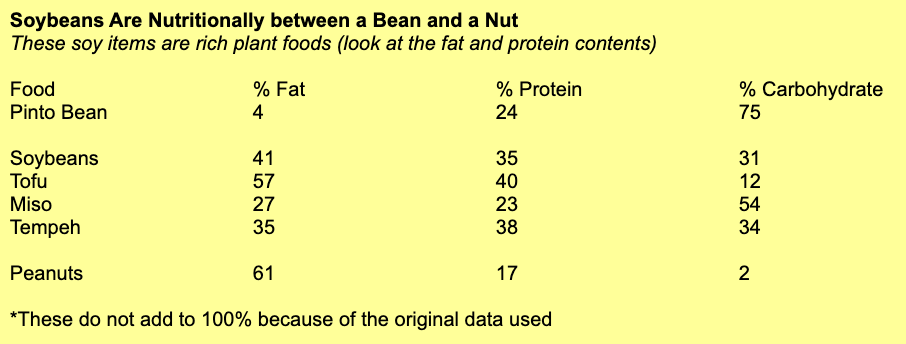Dr McDougall recommends that soy intake not exceed 5% of total calories, just like Asian diets with soy. An excerpt from
Soy — Food, Wonder Drug, or Poison? (2005):
Reserve Traditional Soy foods for Special
Despite concerns, there is no definite evidence that traditional soy foods are harmful at levels customarily consumed. Consider the hundreds of millions of people living in Japan, consuming soy products throughout their life — and they enjoy the longest life expectancy in the world (Japanese women are expected to live 84.93 years, compared to US women to 79.5 years; and Japanese men to 78.07 years, compared to 74.1 years for US men).
However, soybeans and their by-products should be thought of as rich foods – naturally high in fat and protein. In their traditional forms consider them as delicacies – and you should consume them as you might other plant food delicacies – nuts, seeds, avocados, and olives – in small amounts on special occasions.
How is soy consumed in Asian countries? The same article explains:
In Asian countries, soy is consumed as boiled soybeans (edamame), tofu (soybean curd), natto (fermented soybeans), miso (fermented soybean paste), okara (a by-product of tofu), soybean sprouts, soymilk, yuba (by-product of soy milk), kinako (soy flour), and soy sauce. These foods are made from simple processes like grinding, precipitation, and fermentation – thus, most of soy’s ingredients remain little altered.
Less than 5% of daily calories in the typical diet of Japanese or Chinese people comes from soybeans.1 This amounts to about 2 ounces (55 to 64 grams) derived from soy foods daily, which means only 7 to 8 grams of protein and 15 to 45 milligrams of the estrogen-like phytochemical known as isoflavone. How could this tiny amount of soy food make a measurable difference – positive or negative – to the health of Asians?
The primary reason these people are so hardy is that the Asian diet is based on a starch – rice – with generous amounts of vegetables and fruits. Starches are ideal foods for human nutrition and have many desirable nutritional qualities – they are low in fat, moderate in protein, high in carbohydrates, and contain no cholesterol. The Asian diet also contains few animal products. Any unique pharmacologic benefits from eating soy are unnoticeable compared to the impact of these people’s overall diet. (For a discussion of the benefits of starches, see my April 2004 newsletter article: People – Not Their Words – Tell “The Carbohydrate Story.”)
How much soy daily? The same article explains:
"We recommend that you use traditional soy foods, like soy milk and tofu, only as a small part of your diet, at most 5% of your daily calories. “Synthetic soy foods,” like meats, cheeses, and soy bars, should rarely, if ever, be consumed."



 Instagram
Instagram YouTube
YouTube